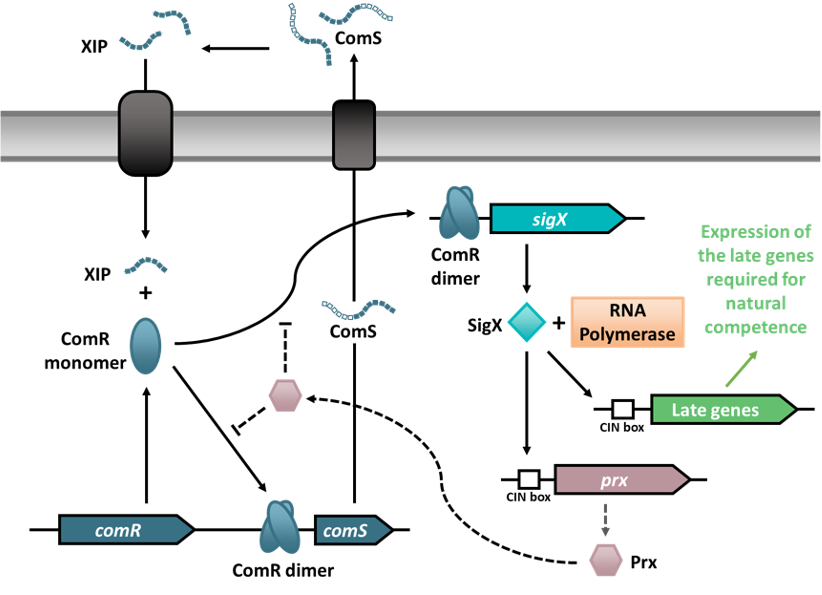Natural Competence in Streptococcus
Schematic of Rgg family quorum sensing
Gram-positive bacteria secrete small peptides to signal to each other in a process known as quorum sensing. This allows bacteria to coordinate a response to their environment as a whole population. Streptococcus use quorum sensing to time exactly when they become competent, or when they acquire new DNA from the extracellular environment. Notably horizontal gene transfer by natural competence and other methods, such as transduction or by infection through bacteriophages, is an important means of bacterial evolution.
In particular we are interested in studying the ComRS receptor-signal pair, how it is regulated, and the genes that it activates.
To study natural competence, we collaborate with Michael Federle and Donald Morrison.
In particular we are interested in studying the ComRS receptor-signal pair, how it is regulated, and the genes that it activates.
To study natural competence, we collaborate with Michael Federle and Donald Morrison.
Bacteriophages in Streptococcus pyogenes
Schematic of quorum sensing inhibition in Streptococcus pyogenes by the phage protein paratox
The expression of the phage protein paratox is induced in response to ComRS quorum sensing in Streptococcus pyogenes. Paratox inhibits the pathway by directly binding to the receptor ComR and preventing its activation as a transcription factor. This helps the phage protect its genome from damage.
The protein paratox is one example of how bacteriophages manipulate their bacterial hosts. We are studying the various ways paratox and other phage proteins control metabolic processes of Streptococcus.
The protein paratox is one example of how bacteriophages manipulate their bacterial hosts. We are studying the various ways paratox and other phage proteins control metabolic processes of Streptococcus.


